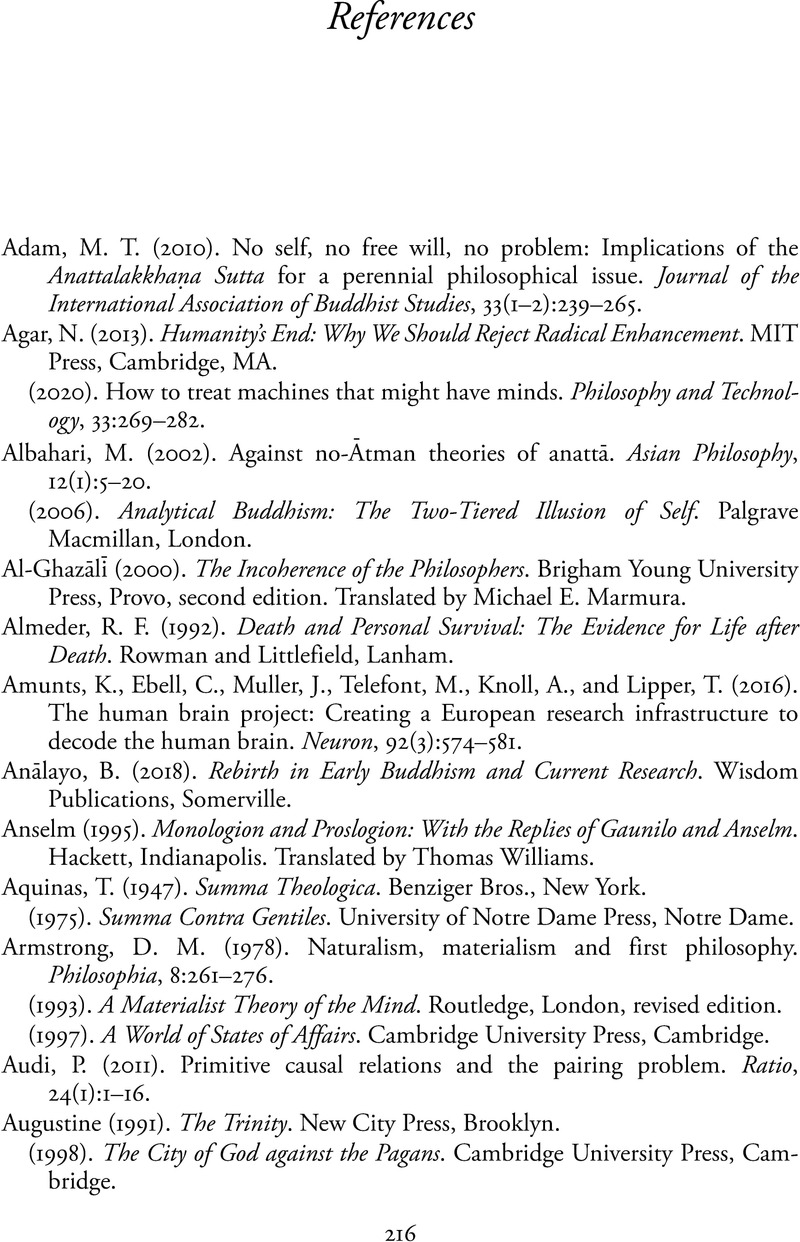Book contents
- Frontmatter
- Contents
- Acknowledgments
- 1 Introduction
- 2 Arguments against Substance Dualism, Part 1
- 3 Arguments against Substance Dualism, Part 2: Pairing Problems
- 4 Arguments for Substance Dualism
- 5 Interlude: What Exactly Is the Difference between Our Being Immaterial Souls and Our Being Composite Physical Objects?
- 6 Nonself, Part 1: Arguments against Our Existence
- 7 Nonself, Part 2: The Self Exists
- 8 Personal Ontology and Life after Death, Part 1: Resurrection, Reincarnation
- 9 Personal Ontology and Life after Death, Part 2: Mind Uploading
- References
- Index
- References
References
Published online by Cambridge University Press: 07 March 2024
- Frontmatter
- Contents
- Acknowledgments
- 1 Introduction
- 2 Arguments against Substance Dualism, Part 1
- 3 Arguments against Substance Dualism, Part 2: Pairing Problems
- 4 Arguments for Substance Dualism
- 5 Interlude: What Exactly Is the Difference between Our Being Immaterial Souls and Our Being Composite Physical Objects?
- 6 Nonself, Part 1: Arguments against Our Existence
- 7 Nonself, Part 2: The Self Exists
- 8 Personal Ontology and Life after Death, Part 1: Resurrection, Reincarnation
- 9 Personal Ontology and Life after Death, Part 2: Mind Uploading
- References
- Index
- References
Summary

- Type
- Chapter
- Information
- Personal OntologyMystery and Its Consequences, pp. 216 - 238Publisher: Cambridge University PressPrint publication year: 2024

